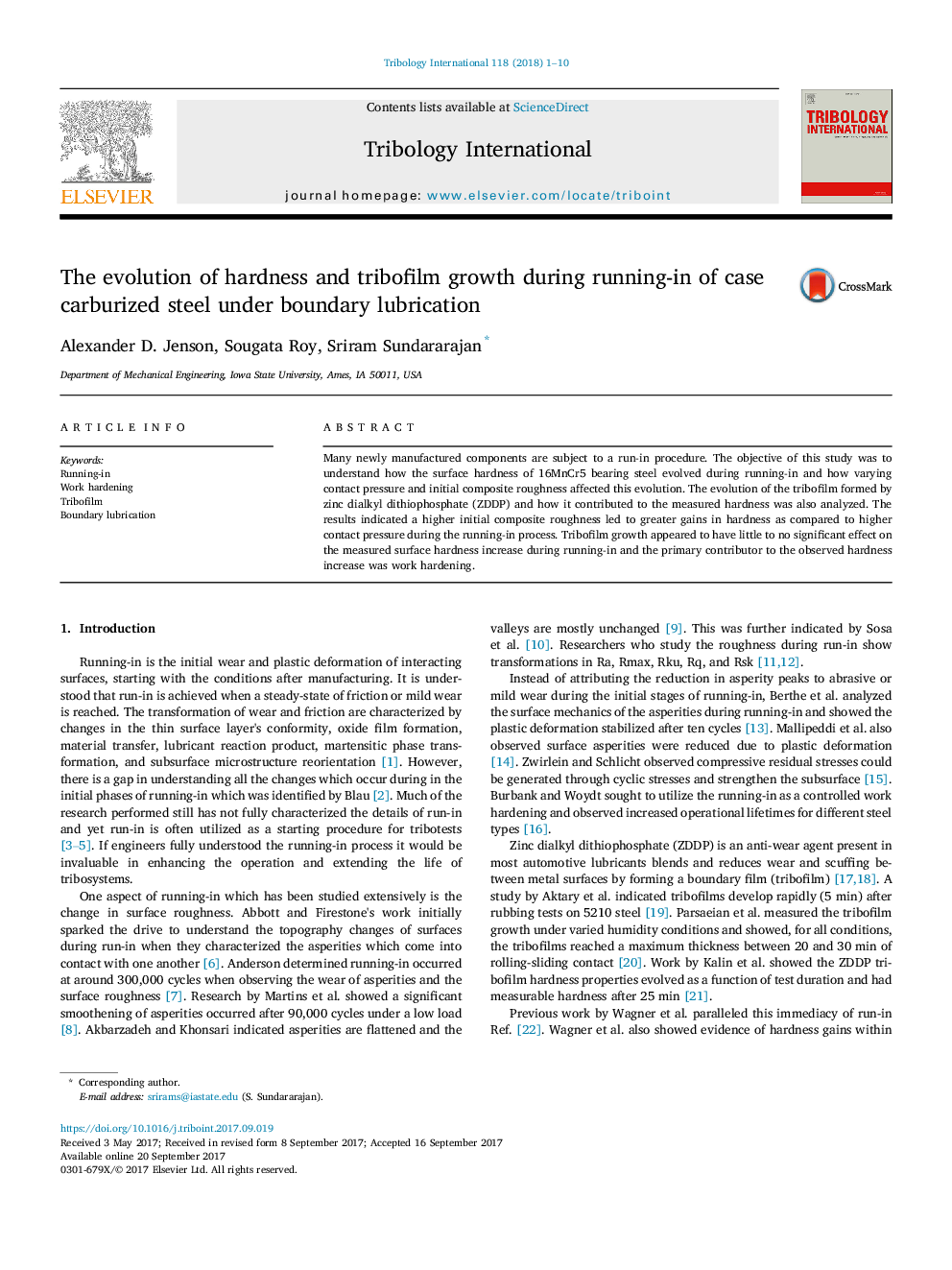| Article ID | Journal | Published Year | Pages | File Type |
|---|---|---|---|---|
| 4985712 | Tribology International | 2018 | 10 Pages |
Abstract
Many newly manufactured components are subject to a run-in procedure. The objective of this study was to understand how the surface hardness of 16MnCr5 bearing steel evolved during running-in and how varying contact pressure and initial composite roughness affected this evolution. The evolution of the tribofilm formed by zinc dialkyl dithiophosphate (ZDDP) and how it contributed to the measured hardness was also analyzed. The results indicated a higher initial composite roughness led to greater gains in hardness as compared to higher contact pressure during the running-in process. Tribofilm growth appeared to have little to no significant effect on the measured surface hardness increase during running-in and the primary contributor to the observed hardness increase was work hardening.
Related Topics
Physical Sciences and Engineering
Chemical Engineering
Colloid and Surface Chemistry
Authors
Alexander D. Jenson, Sougata Roy, Sriram Sundararajan,
